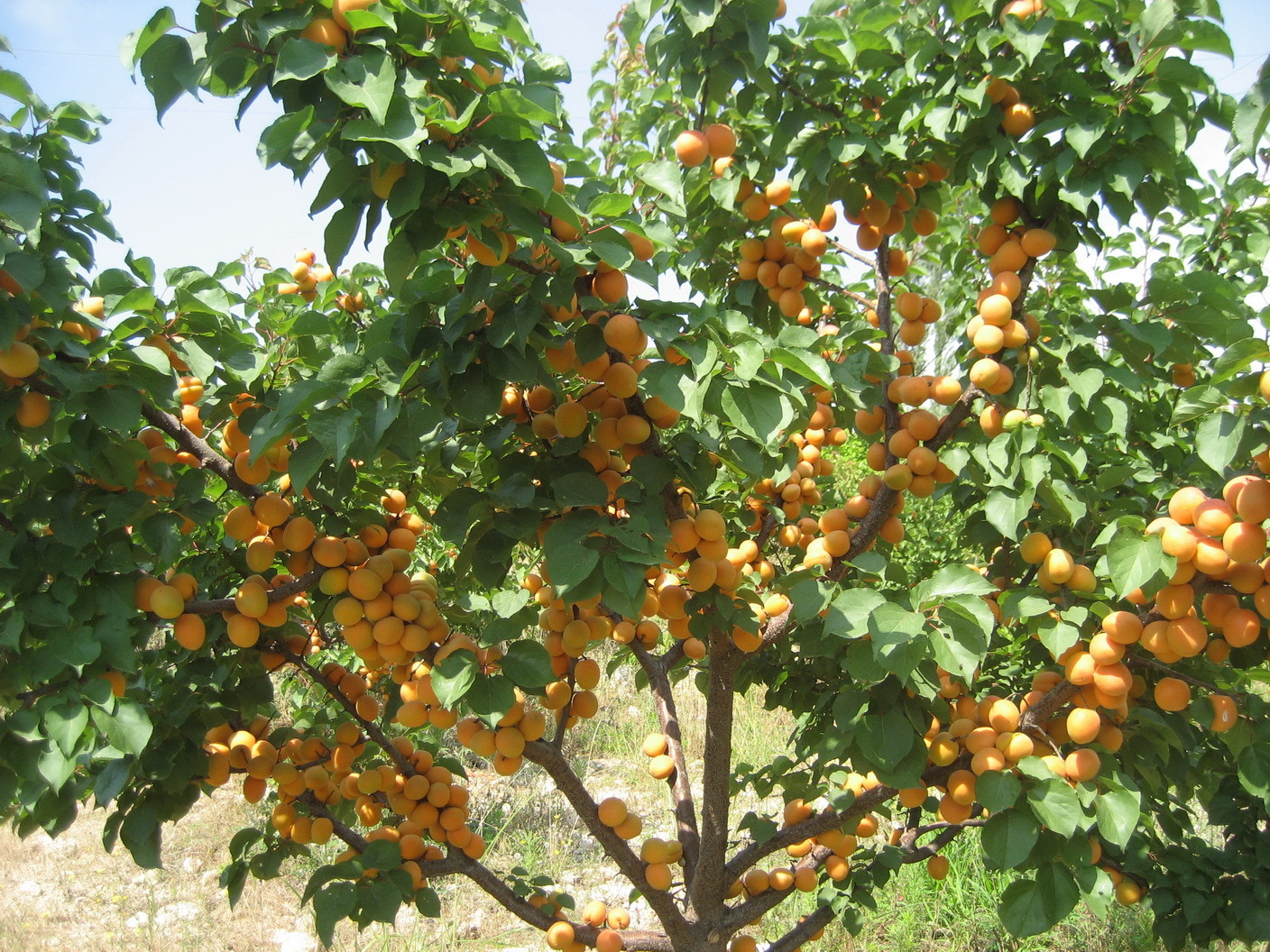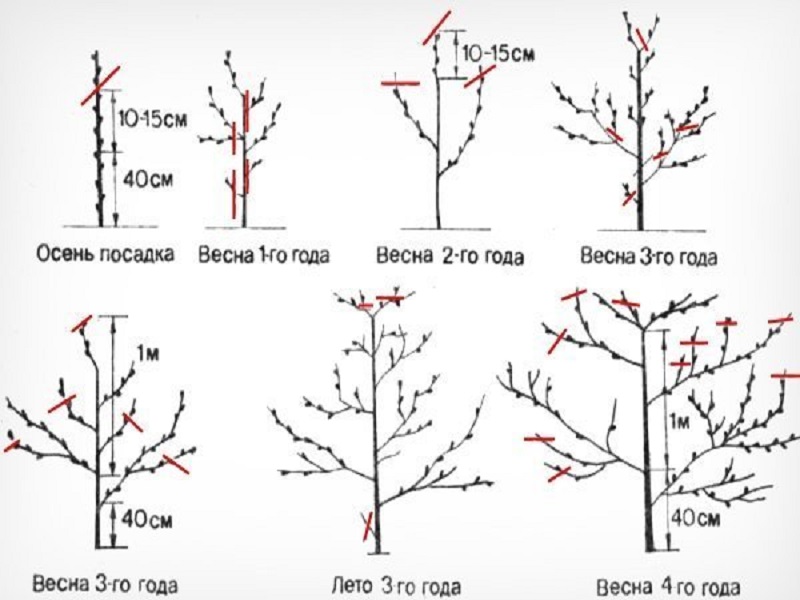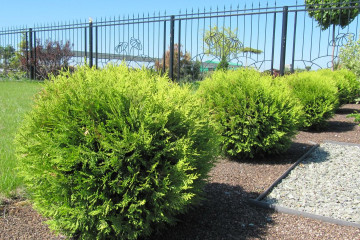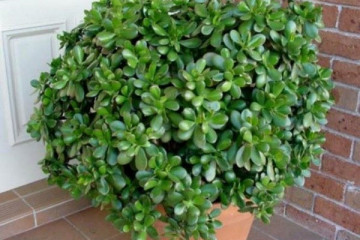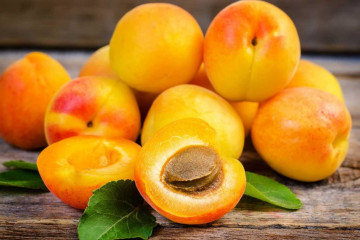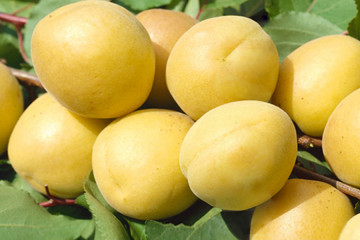Apricot (tree): what it looks like, how to care, how long it lives
Content:
Stone fruit crops are very popular among Russian gardeners; the apricot tree has got a special love, despite the fact that the culture is known for its exactingness in care and maintenance. Increasingly, in garden plots, you can find a southern tree, strewn with ripe fruits.
Brief botanical description of the plant
Common apricot (Latin Prunus armeiaca) belongs to deciduous fruit trees and belongs to the Pink family. The culture is popular not only in the South, but also in central Russia, Siberia and the Urals.
An adult plant can reach a height of 8 meters. The leaf plate is ovoid with finely toothed edges, their length varies within 6-8 cm.
Fruits can be round or obovate. Inside the pulp is a thick-walled bone with a rough surface.
The best varieties of apricot
Russian nurseries offer planting material with good frost resistance. As a rule, the trees are already grafted, so there is no need to carry out any special manipulations on them.
Early varieties
Early ripe apricots are sensitive to temperature swings, therefore they are easily damaged by frost. But with a warm spring, by mid-June they can provide ripe fruits. The most common varieties are:
- "Honey";
- "Red-cheeked";
- "Tsarsky".
The fruits of these varieties have a slightly flattened shape and reach a weight of up to 55 g. As for the taste, the fruits are juicy with a light and pleasant sourness.
Mid-season varieties
Representatives of mid-season apricot varieties delight summer residents with fruit in July. The trees tolerate dry summers well. If properly prepared for the winter period, they will be able to withstand frost.
For Moscow, the Moscow region and other regions of Russia, the following varieties are suitable:
- "Royal";
- "Russian";
- Northern Triumph;
- "Shalakh".
These fruits are famous for their orange-yellow flesh with a sweet and sour taste. Delicious jams and dried fruits are obtained from the fruits.
Late varieties
These varieties mature only towards the end of August. The best representatives were recognized:
- "Spark";
- "Melitopol late";
- "Success".
These hybrid varieties have high winter-hardy characteristics and are famous for abundant fruiting. Low spreading trees survive the winter well without additional insulation. Fruits are suitable for stewed fruit, jam and drying.
Landing dates
As for the timing of planting, then you need to take into account the climatic conditions of the region. Nurseries usually provide information on each seedling. In any case, it is impossible to overexpose a young plant, since outside the ground the tree weakens, wastes strength.
The optimal time for planting a tree is the period from mid-April to mid-May. At this time, the soil is already well warmed up.
Preparation of the site and seedlings for planting
The apricot tree is quite demanding, it will not actively grow and develop in the wrong soil. For him, you need to find a place in which there is no stagnation of water. Dislikes culture and strong winds. As for the soil, clay soil should be avoided.
The seedling hole is being prepared since autumn, its depth should vary within 45-55 cm in depth, and the width - 65-80 cm. The composition is laid in the hole:
- manure - 1.5 buckets;
- superphosphate in granules - 600 g;
- potassium sulfate - 500 g.
Planting material is also being prepared. The day before planting, the seedling must be soaked in warm water. It is important to examine the roots of the apricot and remove the dry ones if necessary.
Apricot propagation methods
The stone fruit culture reproduces well. There are three ways to get a new tree:
- using a bone is one of the most reliable methods, but it takes time;
- cuttings - the healthiest shoots are taken from the plant, which are later rooted in the substrate, this option is faster;
- you can propagate a tree by grafting, that is, using a cuttings taken from a tree you like, graft a wild stock.
Harvesting apricots
Caring for an apricot tree includes proper and timely harvesting. As for the timing of ripening, they entirely depend on the region in which the crop is grown.
The early varieties can be harvested at the end of June, while the late ones ripen only by the end of August. It is possible to store fruits that are not even ripe completely only if they were plucked from the branches, and not picked up from the floor. Fallen fruits spoil quickly.
Apricot care
Before growing a stone fruit culture, you should learn everything about the apricot, how to care for the tree, what requirements the plant has on the soil and fertilizer.
How to groom in spring
With the onset of spring, the tree needs care in the form of pruning, it is carried out before the sap flow begins. You also need to whitewash the trunk and branches, this is pest prevention.
Do not forget about fertilizing, no matter where the apricot grows in a pot or open ground, it needs feeding. Urea is best suited to saturate the soil with nitrogen. Watering in the spring is carried out abundantly, especially if there was a snowless winter.
Young apricot care in summer
Summer care involves regular watering twice a week. If the crown is thickened, then you should cut off the branches that grow incorrectly, otherwise this may affect the yield.
How to care for the fall
Autumn care is based on activities aimed at preparing the fruit tree for winter. Mandatory pruning, fertilization is carried out.
You should also remove all fallen leaves and plant residues from the site. In addition, you need to dig up the ground around the tree, carry out preventive spraying against diseases and pests that can hide in the bark and soil.
What time is the pruning
Apricot pruning is carried out twice, the first time in the spring, and the second in the fall.This treatment is for health purposes and also helps to form the correct and beautiful crown of the fruit tree.
Autumn pruning begins from the periphery, that is, all shoots are shortened, the length of which exceeds 40 cm. During the winter, the plant will fully recover, gain strength to lay new buds.
In spring, the shrub is pruned for sanitary purposes. All weak branches are removed, as well as old ones that are more than three years old.
Pruning is carried out with a sharp pruner, the cut is made at a 45 degree angle. All shoots are cut by 30%, with the exception of skeletal branches, they cannot be touched.
Pests and diseases of apricot trees
In fact, stone fruit crops are often subject to disease and pest attacks.

The main symptoms of moniliosis are dry branches and apricot leaves, which remedies to use for the disease depends on the period in which the plant is located
Most often, gardeners and summer residents are faced with the following unpleasant moments:
- Viral wilting, in order to recognize the disease, you need to inspect, see what leaves the apricot has, the condition of the wood and bark. If the foliage and branches are dry, then the tree is infected. Treatment of the plant with fungicides will correct the situation.
- The Vals mushroom refers to infectious pathological conditions that manifest itself in the form of an orange growth. You can get rid of the problem with the help of fungicidal preparations. A good effect, in the opinion of summer residents, was shown by "Switch" means.
- Verticillary wilting, with the disease chlorotic spots appear on the foliage, they begin to turn yellow and soon fall off. Deal with the Fundazol problem.
- The caterpillar of the hawthorn butterfly - most of all, buds and foliage suffer from these representatives. Insects in a short time can cause the tree to "go bald". Most often, gardeners manually collect caterpillars during flowering and fruiting. And already in the fall, they carry out the processing of wood with purchased means: "Chlorophos", "Phosphamide", "Dursban".
- Hole spotting appears in early spring, it is then that dark spots appear on the leaf plate, which later turn into holes. It is necessary to prune the affected shoots, and then spray the tree with copper sulfate.
- Bacterial spotting appears as watery spots on foliage. It is treated with chemicals containing copper.
- Moniliosis is a common disease that affects all parts of the plant, apricots on the tree become stained and rot, foliage curls, dries and falls off. As a treatment, a 3% solution of Bordeaux liquid is used, it is used during flowering. Then you can use the purchased drug "Horus".
Wintering apricot
Among all stone fruit crops, including peach, plum, apricot boasts the most winter-hardy roots. He will calmly survive the winter in the middle lane.
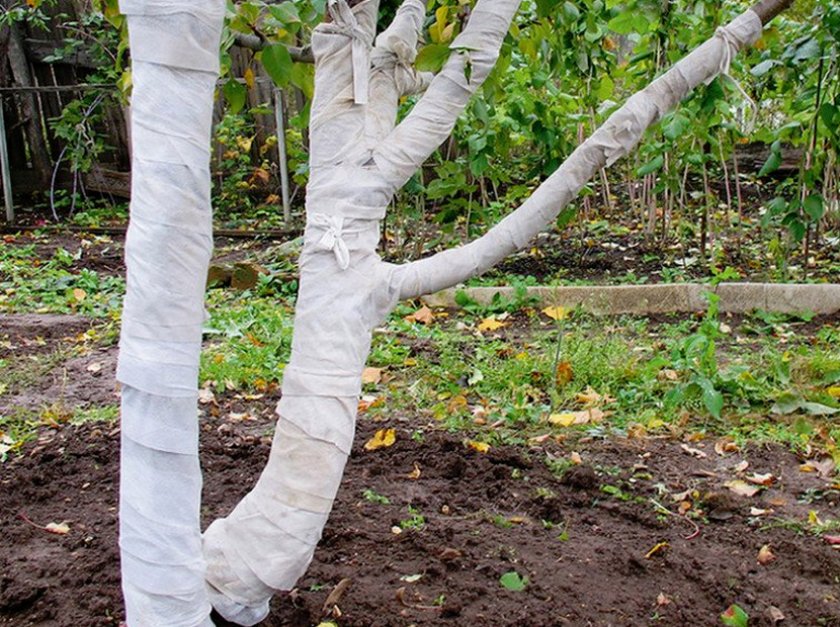
In regions with cold winters, apricots should be insulated, severe frosts can destroy a thermophilic tree
Only young plants that have not reached the age of three should be insulated. They can be tied with spruce branches, wrapped in lutrasil. The lower part of the trunk must be earthed up without fail. Remove the insulation in the spring, when the temperature returns to normal and will not drop below -5 degrees.
After you figured out how to care for an apricot, you can start planting this garden culture in your own dacha. Then, in a few years, you will be able to enjoy juicy and tasty fruits grown by your own hands.
